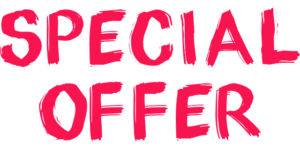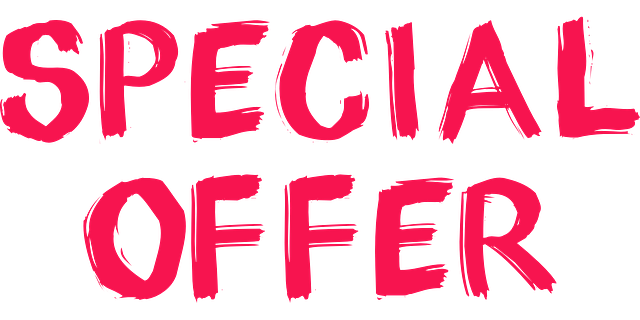Prospecting
 Attitude matters.
Attitude matters.
Let me tell you a story…
Once upon a time…I took a new job at a startup and one of my first activities was attending an industry convention where I met, interacted, and traded business cards with 30-40 people. My goal for that startup was to form commercial relationships with some of these people I met to leverage those relationships to advance the goals of the company. Simple. But how do you do that?
When I got back to my office, I loaded all these business cards into my system and started reaching out.
There’s no big secret to following up on business contacts. In the biz it’s called ‘touches’. You can get to anyone if you organize your touches. It doesn’t matter if you are trying to sell something, looking for charitable contributions, volunteers for the bake sale or a new job, the process is the same. It’s simple and it works.
Touches are essentially how you follow up. You’re touches could be marketing outreach, invites to events, etc. You build a campaign this way. You start with getting their attention, you move that to interest and then to engagement.
You have been on the receiving end of these touches and these campaigns. Right? You get the email, you get pushed related ads, and then you get some sort of call to action, like ‘download this whitepaper’ that’s the point where they got your attention, then your interest and then a bit of engagement.
It used to be easier to get people’s attention. Now everyone is so overworked, stressed out and distracted, it’s very hard to get their attention. But, still, you can get anyone’s attention if you’re willing to put the effort into it.
This goes back to the methodology, and, at the risk of sounding like a steak knife or timeshare salesman, your attitude.
My process was a series of touches. 6 to 9 touches as a matter of fact. Not rocket science. Do you know what the average number of touches that most salespeople need to get a response? Turns out it is 6 or 9.
As a corollary, do you know how many touches on average a salesperson will make, let’s call them ‘attempts’, before they give up? 2. They give up after 2 touches.
Why?
Because after 2 tries they run out of things to say and figure the target doesn’t want to talk to them and isn’t interested. Whereas many times the target is just too distracted to pay attention and doesn’t notice until that 6 or 9th touch.
Ironically this is particularly true of the prospects that everyone wants to talk to, the executives with control over budget. Those executives tend to be impressed by and award persistence. I can tell you by personal experience of having finally gotten the executive on the phone and having them say “First, let me tell you, I’m impressed by your persistence”.
Another reason people give up after a couple attempts is that they haven’t thought through their process, and they haven’t personalized their approach. By the second touch they are repeating themselves and it’s awkward and needy.
But, it has to be a particular type of persistence. It can’t be the spammy automated campaigns that we all get. It’s got to be personalized and it has to have a story and you have to tell them briefly and efficiently why they care. That means you have to do your homework.
You have to have a thesis.
In practice what would this look like? First you research the person. You look at their LinkedIn profile. You understand what their role is, what their history is and make some assumptions around why they would care. Then you research the company. You figure out what their CEO is talking about. You figure out why the company would care and create a story or a thesis around how the ‘why do you cares’ align with what you are offering.
Next you are going to take that story and spread it out over 6-7 touches. And you’re going to come at them form different directions. This means finding something relevant and important to say for each touch that progressively advances the storyline across the arc of the touches.
It’s got to be personalized and professional. (Note: I hate the new automated campaigns that talk like you just met after surfing off Muscle Beach – “Hey dude, check out this cool stuff…”) You align different resources with your thesis and their story. Maybe some press releases, news articles, quotes from customers, or collateral that you deploy across the arc of those 6-7 touches.
Why don’t more people personalize their approach? Because it’s hard. It requires research and preparation and planning. You can do maybe waves of 10 people a week with a personalized approach. Do the math. 7 touches times 10 people is 70 touches. This is another reason why the touches you receive in your life are so low quality. Because in an attempt to squeeze more productivity out of the process, in the vernacular, “Make it scalable”, it gets commoditized.
And that is precisely why my high-quality, personalized approach is so much more effective. I can get to almost anyone. I have close to an 80% engagement rate. That doesn’t mean 8 out of 10 people are writing checks, that means 8 out of 10 people are having engagement and conversations with me.
Here is a basic example:
Day one I’m going to touch them 3 times.
I make these touches all at the same time, or within minutes of each other, mandatory the same day.
First touch – I call them on their telephone before the workday starts. 6 AM or earlier. Why? Well, here’s what’s going to happen. High percentage of time you will get voicemail and you can leave a nice, tight, short, personal message.
Every once in a while, they will actually answer the phone because, especially executives, are the type of person who is in the office early. If that happens, you’d better be ready with that same nice, short, tight, personal message.
Additionally, many people aren’t going to give you their phone number, even on a business card. You know where they work, you know their name, but you don’t know their direct number.
If you call before office hours no receptionist is going to answer the phone. What you will get is that miracle of modern technology the automated company directory.
The nice mindless computer will give you the direct extension of the person you’re looking for. When you hit their extension, you might even get an out of office or after hours message where they tell you “Hey, I’m not at my desk right now but if this is an emergency call my cell phone at XYZ or reach out to Bob may assistant at XYZ.”
Now I’ve got their cell phone, their direct extension and the name and number of their assistant. Which I can use for the second round of touches.
That voicemail is the first touch. I’ll also send a connection request on LinkedIn on this first day – again with a personal, non-committal, non-salesy message. My tested LinkedIn message is “Bob, Hope all is well. It would be a pleasure to connect.” That’s it. Just getting on the radar. Just trying to get a conversation.
At the end of my first voicemail, I’m going to close with, “I’ll follow up by email.”, which I do, and there are your first 3 touches. I send a personalized, but professional email, that doesn’t try to sell anything.
All I’m selling in the initial approach is engagement. All I am, in the vernacular, ‘closing for’, is a conversation.
The next 2 touches are 1-2 days later assuming I haven’t heard anything back from them. This is a phone call followed by an email where I might have a piece of content like a press release or an article where I say, “I though you might be interested.” And I close for a call.
This second touch has a higher probability of getting to a live human because I might now have their direct extension or know who their assistant is.
Then finally a couple days later, I might try again with another email and call at a different time.
Finally, the last touch is what’s known as a ‘dear John’ message that says ‘sorry to bother you, I see you’re not interested; I’ll stop sending you email’. Surprisingly enough this creates FOMO in a certain percentage of your targets, and they will respond.
That’s it. That’s the mechanics of it. I can engagement with 8 out of 10 even in today’s hyper distracted, super noisy world.
But what about the attitude? How does attitude matter?
Have you ever been called by a telemarketer?
Of course, you have.
What does that person sound like?
They sound like they are staring a list of 100 names, and they are going through the motions. Typically, they sound like they hate their job. They sound like people who have been yelled at and told ‘stop calling me’ 50 times before they got to you. In summary they are miserable, hate the world and you can hear it immediately.
Who wants to talk to this miserable person? Who wants to engage with this miserable energy vampire who knows nothing about you and what you care about?
Nobody.
Why do companies use these methodologies? Because they say ‘it’s a numbers game’. And their numbers mean the more touches they can make the more engagement they can have. In the vernacular they want a ‘scalable’ process. A machine they can throw people and money at to brute force engagement. Their hit rate is about 8%, which I find surprisingly high. For the math challenged, that’s 8 people out of 100 you call.
I can’t do 100 touches a day, but I get 80%.
The final thing I’ll say, which was the lead-in to this article, is that attitude is the tiebreaker. Attitude is the secret sauce. When you are leaving these touches, especially the first touches, pour your enthusiasm into those conversations. It’s not brain surgery. It’s not digging ditches in the rain. It’s life and it’s fun. Have fun. Be genuinely excited to talk to these people when you pick up the phone.
Let’s ask the question again; do you want to talk to people who are happy and fun? Yes, you do. That opens people up. They like talking to you. They try to help you.
And at the end of the day, that’s all you’re looking for, help.
That’s how I’ve always approached it. You can’t call people on the phone when your stressed out and depressed like those poor telemarketers stacked up in small cubicle hell somewhere in the flatlands.
The end of the story. Was I able to turn those tradeshow contacts into business? Well, yes and no. That startup turned out to be not so commercially successful. But one of those contacts, one of those engagements was with the owner of another company who ended up buying that startup.
It all comes out in the wash.
Put life and happiness into your approach and you’ll make an impact.

